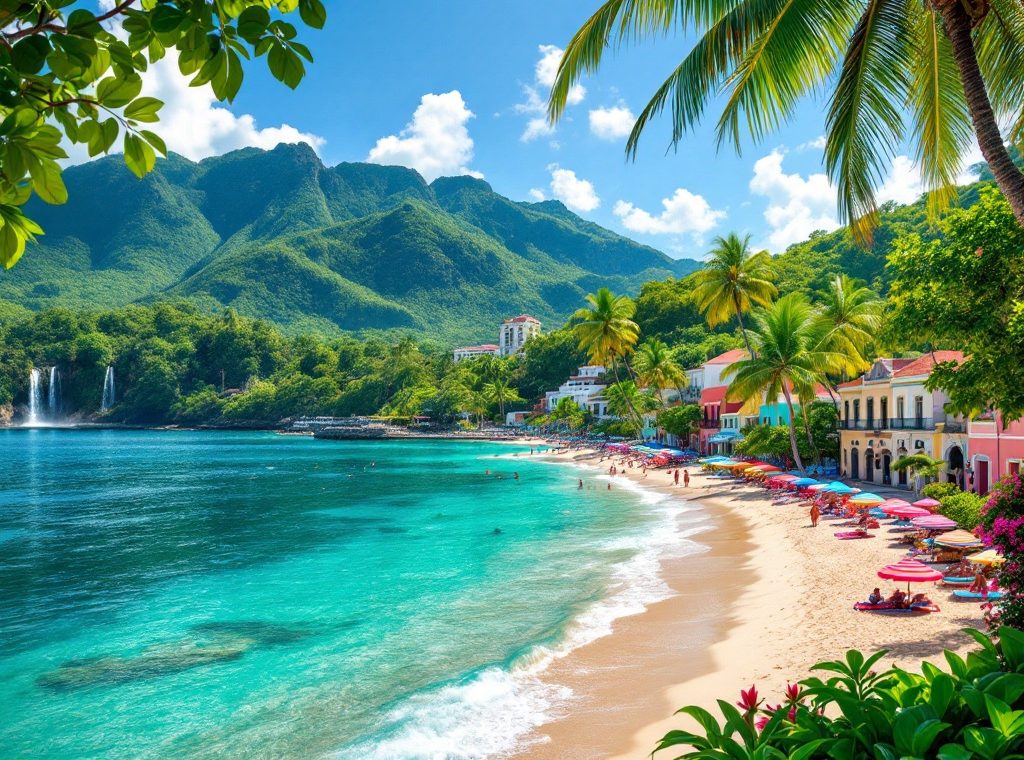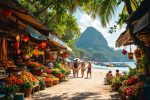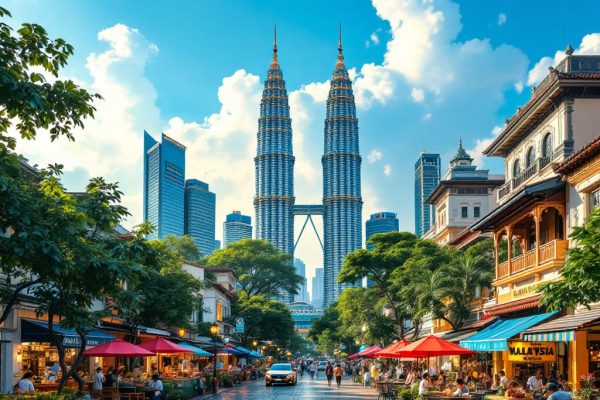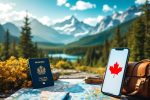What to Know Before Going to Puerto Rico
Dreaming of a Caribbean escape without the passport hassle? Discover Puerto Rico, a U.S. territory boasting vibrant culture, stunning beaches, and lush rainforests like El Yunque. From exploring the historic Old San Juan, a UNESCO World Heritage site, to kayaking in bioluminescent bays, this island offers an unforgettable blend of relaxation and adventure. U.S. citizens can travel with ease, using dollars directly. Plan your perfect Puerto Rican getaway today and immerse yourself in this Caribbean gem!
Important information
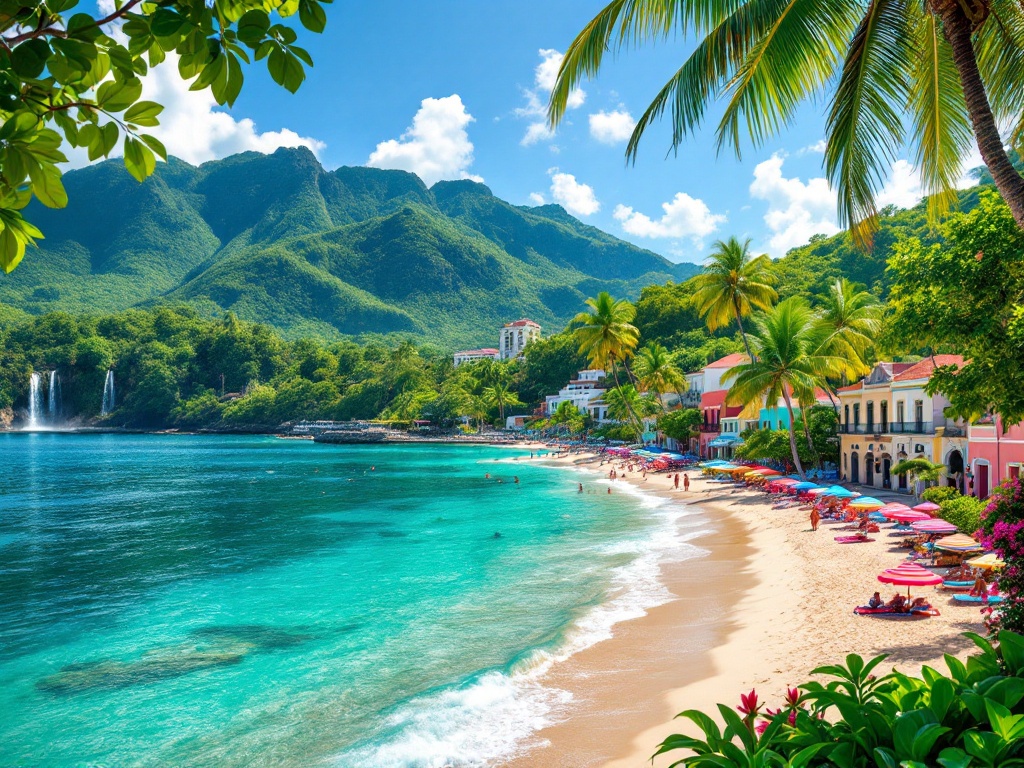
- U.S. citizens can travel to Puerto Rico without a passport.
- Hurricane season is from June 1st to November 30th. Be sure to plan accordingly.
- Renting a car is recommended for exploring the island due to limited public transport.
- Old San Juan is a UNESCO World Heritage Site and a must-see.
- Support local businesses and practice responsible tourism.
Understanding Puerto Rico as a Travel Destination
Puerto Rico, a U.S. territory, offers easy travel for U.S. citizens, who can explore this Caribbean gem without a passport. From breathtaking scenery and vibrant culture to warm hospitality and delectable cuisine, the island has something for everyone. Beyond its beautiful beaches and rich history, Puerto Rico presents a perfect blend of relaxation and adventure, catering to diverse travel preferences. While San Juan is a must-see, venturing further afield reveals the island’s true essence. A short ferry ride to nearby Culebra and Vieques, for instance, unlocks access to secluded beaches and unique attractions.
A Commonwealth of the USA
Traveling to Puerto Rico is easy for U.S. citizens. As a U.S. commonwealth, there’s no need for a passport, making travel between the island and the mainland as simple as traveling between states.
Unique Regions and Topography
Puerto Rico is divided into six distinct regions: East, West, North, South, Central, and Metro. The island’s diverse topography includes everything from stunning beaches and coastal plains to towering mountains and lush rainforests, exemplified by El Yunque National Forest. Adding to its unique character, Puerto Rico comprises 78 municipalities.
Essential Travel Tips for Puerto Rico
Planning a trip to Puerto Rico? If you’re a US citizen, you won’t need a passport or visa. It’s a US commonwealth. Other nationalities should check standard US entry requirements. The currency is the US dollar, so no exchange is necessary. Hurricane season extends from June 1st to November 30th, so prepare accordingly. While generally safe, be aware of your surroundings and know local emergency numbers. Travel insurance is also recommended.
For US Citizens:
- No passport or visa required.
For Other Nationalities:
- Check standard US entry requirements.
Currency: US dollar.
Hurricane Season: June 1st to November 30th. Prepare accordingly.
Safety: While generally safe, be aware of your surroundings and know local emergency numbers. Travel insurance is recommended.
Visa and Passport Requirements
Traveling to Puerto Rico is easy for U.S. citizens, as they only need a standard U.S. ID. Non-U.S. citizens typically require a passport, and potentially a visa depending on their nationality. It’s always best to verify entry requirements based on your citizenship before your trip.
Currency: Using the United States Dollar
US visitors can spend their dollars directly—no currency exchange needed.
Credit cards are widely accepted, and ATMs are readily available.
International travelers should exchange their money for US dollars (USD) upon arrival, conveniently done at most airports.
Carrying some cash is recommended, especially for small purchases in rural areas or local markets. Note that foreign transaction fees may apply to non-US cards.
Hurricane Season Awareness
Hurricane season in Puerto Rico and the Caribbean runs from June 1st to November 30th. Travelers to these areas should monitor weather forecasts and review their chosen airline and hotel’s hurricane policies. Many accommodations have preparedness plans to ensure guest safety. Planning ahead is essential for a safe and enjoyable trip.
Safety Precautions and Emergency Preparedness
Staying safe in Puerto Rico involves a few simple precautions. Be mindful of your surroundings and keep your belongings secure. Follow local advisories, especially in unfamiliar areas. Keep emergency numbers, including police and medical contacts, readily available. Locate your nearest embassy or consulate in case of emergencies.
Packing Essentials for Puerto Rico
Pack light, breathable clothing such as cotton and linen for Puerto Rico’s tropical climate. For outdoor activities like hiking, choose moisture-wicking fabrics. While days are warm, evenings can be cooler, so pack a light sweater or jacket. Don’t forget your swimsuit for the beaches.
Apply high-SPF, broad-spectrum sunscreen frequently to protect yourself from the intense Caribbean sun. Insect repellent with DEET or picaridin is essential to keep mosquitoes away.
For added protection, consider a wide-brimmed hat and sunglasses to shield yourself from the sun’s rays.
Lightweight Clothing for Tropical Climate
When visiting Puerto Rico, pack light, breathable clothing to stay comfortable in the tropical climate, which averages a balmy 80°F (27°C). Essentials include swimwear for enjoying the beaches and sunscreen with insect repellent to protect yourself from the sun and bugs. A light rain jacket is also recommended for occasional showers. Consider bringing a reusable water bottle to stay hydrated. Comfortable walking shoes are essential for exploring the island’s diverse terrain, from sandy beaches to lush rainforests. Don’t forget a hat and sunglasses for additional sun protection.
Sunblock and Bug Spray Necessities
Shield your skin with sunscreen, opting for SPF 30 or higher for optimal sunburn protection.
Don’t forget insect repellent containing DEET or picaridin to effectively ward off mosquito bites, especially during evenings and in wooded areas.
Getting Around Puerto Rico
Exploring Puerto Rico is best experienced with a car due to limited public transportation. While two international airports receive numerous daily nonstop flights, and ferries connect to Vieques and Culebra, a personal vehicle offers the most flexibility. Once on Vieques or Culebra, consider renting a golf cart, scooter, or car for easy exploration of these islands.
Rental Car vs. Public Transportation
Traveling outside San Juan in Puerto Rico requires some pre-planning due to the unreliable public transportation. Renting a car offers the most convenient way to explore the island. Taxis and rideshares are available, but they can be difficult to find, especially in rural areas. Ferries are the best option for traveling between islands. On smaller islands like Vieques and Culebra, you’ll find even more transportation options, including golf carts, scooters, and car rentals, making sightseeing easy and enjoyable.
Air Travel: Nonstop Flights to Puerto Rico
Traveling to Puerto Rico is easy, with daily nonstop flights to San Juan (SJU) and Aguadilla (BQN). U.S. citizens enjoy passport-free travel to this U.S. territory. Non-U.S. citizens should verify their visa requirements based on their country’s participation in the Visa Waiver Program.
Top Tourist Attractions in Puerto Rico
Explore Old San Juan, a UNESCO World Heritage Site, renowned for its vibrant colonial architecture. Wander through its charming cobblestone streets and discover iconic forts such as Castillo San Felipe del Morro and Castillo San Cristobal.
Puerto Rico’s beaches offer a diverse range of experiences, from lively hubs to tranquil escapes. Condado and Isla Verde attract crowds with their energetic atmosphere. For those seeking serenity and stunning scenery, Flamenco Beach in Culebra and Sun Bay in Vieques are idyllic choices.
Old San Juan: A UNESCO World Heritage Site
Designated a UNESCO World Heritage Site, Old San Juan draws visitors to its 500 years of history, making it a prime destination in Puerto Rico.
Best Beaches and Secluded Spots
Discover Puerto Rico’s secluded beaches. The island’s eastern region offers picturesque cays and hidden shores. Don’t overlook the west coast — Cabo Rojo’s Buye Beach is a must-see.
Outdoor Activities and Attractions
Experience the magic of Puerto Rico’s three bioluminescent bays: Mosquito Bay, Laguna Grande, and La Parguera. These bays shimmer with an ethereal light produced by tiny dinoflagellates, organisms that flash when disturbed. Witness this spectacle from a kayak or boat tour.
El Yunque National Forest, the only tropical rainforest in the US National Forest System, offers a vibrant landscape for hikers. Explore trails leading to breathtaking waterfalls and scenic overlooks, including the popular La Mina Waterfall, perfect for a refreshing swim.
Step back in time in Old San Juan. Visit the imposing Castillo San Felipe del Morro and Castillo San Cristobal for a glimpse into Puerto Rico’s captivating past. Immerse yourself in the island’s vibrant culture through year-round festivals celebrating music, dance, and local traditions.
Beyond the rainforests and bays, adventure awaits. Soar through the canopy on zip lines, explore hidden caves, or discover underwater wonders through snorkeling and diving. For a more relaxed experience, choose an eco-tour for sustainable tourism and learn about the island’s diverse ecosystems, including the unique flora and fauna of El Yunque.
Exploring Bioluminescent Bays
Puerto Rico is home to three breathtaking bioluminescent bays located in Fajardo, Vieques, and Lajas. A guided nighttime tour offers the best way to experience the magical glow of these tiny dinoflagellates.
Visiting El Yunque National Forest
Discover El Yunque, the only tropical rainforest in the U.S. National Forest System. Immerse yourself in its incredible biodiversity, exploring a vast array of plants and animals. Hike trails designed for every skill level, from novice to seasoned adventurer. Don’t miss the breathtaking La Mina Falls, a photographer’s paradise for capturing stunning wildlife shots. Experience the magic of El Yunque.
Historic Sites and Cultural Festivals
Old San Juan boasts two impressive fortresses: Castillo San Felipe del Morro and Castillo San Cristobal, each brimming with history. Don’t miss the vibrant Fiestas de la Calle San Sebastián, a massive street festival celebrating Puerto Rican culture and heritage.
Adventure and Ecotourism Opportunities
Puerto Rico is a thrill-seeker’s paradise, offering a vast array of adventure tourism. Explore mysterious caves, soar through the air on exhilarating ziplines, or hike through the lush El Yunque National Forest. But the island offers more than just adrenaline-pumping activities. Ecotourism thrives in Puerto Rico, inviting visitors to discover the magic of bioluminescent bays and kayak through tranquil mangroves. Nature lovers will find themselves captivated by the island’s diverse ecosystems. For those drawn to the underwater world, Puerto Rico’s vibrant coral reefs offer incredible snorkeling and diving experiences teeming with marine life.
Immersing in Puerto Rican Culture
Puerto Rican culture vibrantly blends Spanish, African, and Taino influences. Common greetings like “buenos días,” “buenas tardes,” and “buenas noches” reflect this heritage. Music and dance, especially salsa and reggaeton, are integral parts of the culture, and numerous festivals showcase this rich tradition. Respect and politeness are highly valued in social interactions.
Although English is prevalent in tourist areas, Spanish remains the primary language. Learning basic Spanish phrases demonstrates cultural sensitivity and enhances interactions with locals.
Simple greetings are a great starting point. Resources like language learning apps and phrasebooks can facilitate your learning journey and help you communicate more effectively.
- Start with greetings like “buenos días”, “buenas tardes”, and “buenas noches”.
- Utilize language learning apps.
- Explore Spanish phrasebooks.
Embracing Local Customs and Cultural Etiquette
Experience the vibrant blend of Spanish, African, and Taino influences in Puerto Rican culture. Warm greetings, often accompanied by handshakes or hugs, are customary. When dining out, a 15-20% tip is typical. Respecting personal space is important, but don’t hesitate to immerse yourself in local festivals and traditions. Politeness is highly valued, and learning a few Spanish phrases can enrich your interactions and demonstrate respect, making it easier to connect with the locals.
Understanding the Spanish Language
While English is common in tourist areas, knowing some basic Spanish can significantly enhance your Puerto Rican experience. It allows you to connect with locals and deepen your cultural immersion, enriching your trip.
Savoring Puerto Rican Cuisine
Puerto Rican cuisine is a vibrant fusion of Spanish, African, and Taíno influences, resulting in a symphony of flavors. Dive into mofongo, a savory dish of fried plantains mashed with garlic and pork. Another must-try is pernil, a succulent slow-roasted pork shoulder. Arroz con gandules, a rice dish studded with pigeon peas, is a staple at any Puerto Rican table, especially during festive occasions. Tostones, twice-fried plantains, offer a delightful crunch, while pasteles, savory meat-filled pastries, provide a comforting warmth. For a truly unforgettable experience, indulge in lechón asado, a whole roasted pig.
Savory Dishes
- Mofongo: fried plantains mashed with garlic and pork,
- Pernil: slow-roasted pork shoulder,
- Arroz con gandules: rice with pigeon peas,
- Tostones: twice-fried plantains,
- Pasteles: savory meat-filled pastries,
- Lechón asado: whole roasted pig.
Beverages
- Piña colada: rum, pineapple juice, and coconut cream,
- Coffee: renowned for its robust flavor,
- Coquito: creamy coconut drink (holiday season),
- Malta: popular malt beverage,
- Refrescos: fruit-flavored sodas.
Traditional Dishes to Try: Mofongo, Pernil, Arroz con Gandules
- Mofongo is a fried plantain dish and a Puerto Rican staple.
- Pernil, slow-roasted pork shoulder, is another favorite.
- Arroz con gandules is a flavorful rice dish with pigeon peas and a must-try.
Puerto Rican Drinks: Piña Colada, Rum, and Coffee
Puerto Rico is famous for its piña coladas, a popular rum-based cocktail. The island is well-known for producing this liquor. Beyond rum, Puerto Rico also boasts a rich coffee culture, supporting numerous local brands.
Responsible and Sustainable Travel
Supporting local businesses, such as restaurants and shops, directly benefits Puerto Rican communities and boosts the island’s economy, which is crucial for its overall well-being.
Respecting the island’s culture and engaging thoughtfully with locals enriches any travel experience.
Minimizing environmental impact through responsible waste disposal is also key, especially in vulnerable natural areas like El Yunque National Forest and the bioluminescent bays. This protects Puerto Rico’s unique ecosystem.
Participating in sustainable tourism strengthens Puerto Rico, ensuring its long-term health and creating a win-win for both visitors and residents.
Supporting Local Businesses and Unique Accommodations
Support local businesses, such as restaurants and shops. This fuels Puerto Rico’s economy, benefiting both visitors and residents.
Choose unique accommodations like locally owned guesthouses, boutique hotels, or eco-lodges. This creates a more authentic experience while directly supporting the community and preserving the island’s distinct charm.
Respect the environment by minimizing waste and avoiding litter, especially in natural areas. This is crucial for preserving the island’s beauty.
Learn about Puerto Rico’s history. This enriches any visit and fosters cultural understanding.
Engage respectfully with locals and participate in sustainable tourism initiatives. Responsible travel helps preserve Puerto Rico’s beauty and culture for future generations.
Practicing Responsible Tourism
Support Puerto Rico’s economy by shopping at local businesses and dining in local restaurants. Minimize your environmental impact by reducing waste and refraining from littering, especially in natural areas. Immerse yourself in Puerto Rico’s rich history and cultural heritage. Engage respectfully with locals and support sustainable tourism practices. Consider eco-friendly tours that help preserve the island’s natural beauty.

